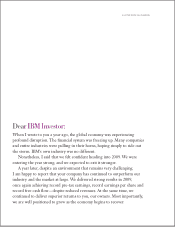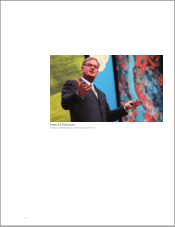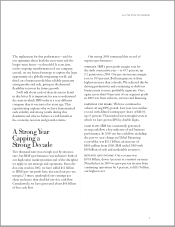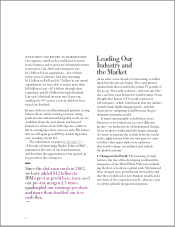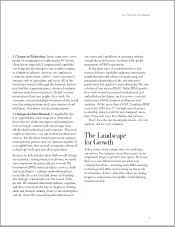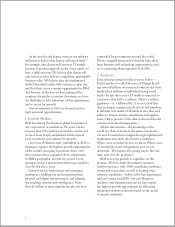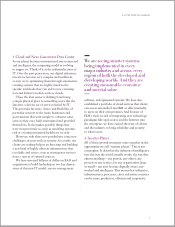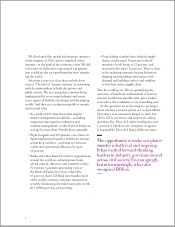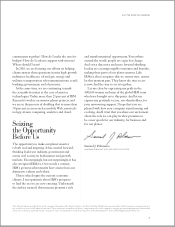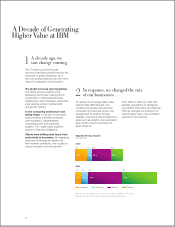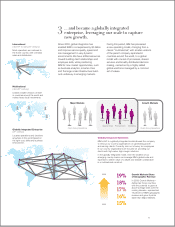IBM 2009 Annual Report Download - page 7
Download and view the complete annual report
Please find page 7 of the 2009 IBM annual report below. You can navigate through the pages in the report by either clicking on the pages listed below, or by using the keyword search tool below to find specific information within the annual report.
2. Changes in Technology: At the same time, a new
model of computing was replacing the PC-based,
client/server approach. Computational capability
was being put into things no one would recognize
as computers: phones, cameras, cars, appliances,
roadways, power lines, clothes
—
and even natural
systems, such as agriculture and rivers. All of this
was being connected through the Internet. And we
now had the computing power, advanced analytics
and new models (now known as “clouds”) to turn
mountains of data into insight. As a result, the
economic, societal and physical systems of the world
were becoming instrumented, interconnected and
intelligent. Our planet was becoming smarter.
3. Changes in Client Demand: Compelled by the
new opportunities and competitive demands of
these rst two shifts, enterprises and institutions
were no longer content with cost savings from
off-the-shelf technologies and solutions. They now
sought to innovate
—
not just in their products and
services, but also their business processes, manage-
ment systems, policies and core business models. To
accomplish that, they needed to integrate advanced
technology far deeper into their operations.
Because we believed that these shifts would change
our industry, creating winners and losers, we made
some important decisions and got to work. We
transformed IBM’s mix of products, services, skills
and technologies
—
exiting com moditizing busi-
nesses like PCs and hard disk drives, and making
108 strategic acquisitions over the course of the
decade. We amassed substantial industry expertise,
and also re-invented the way we deploy it, shifting
skills and decision making closer to the marketplace
and the client. We invested signicantly more in
our teams and capabilities in emerging markets
around the world, and we accelerated the global
integration of IBM’s operations.
At the same time, we transformed our vast
services delivery capability, applying automation,
standardization and advanced engineering and
management principles of the sort that prior
generations had applied to manufacturing. We also
rebalanced our internal R&D. Today, IBM’s portfo-
lio is built around networked, modularized and
embedded technologies, such as service-oriented
architecture (SOA), business intelligence and
analytics. Of the more than 4,900 U.S. patents IBM
received in 2009 (our 17th straight year of patent
leadership, and a record for any company), more
than 70 percent were for software and services.
That’s how the last decade played out
—
for our
industry and for your company.
The Landscape
for Growth
Today, many of our competitors are emulating
our moves. For instance, several have gone on an
acquisition binge to get into new spaces. However,
there is a vast difference between what your
company has done
—
amassing truly differentiating
technology and skills, and focusing on the needs
of enterprise clients
—
and what others are doing,
largely to compensate for rapidly commoditizing
business models.
5
A LETTER FROM THE CHAIRMAN



